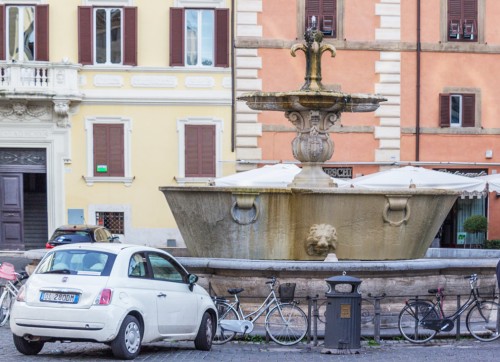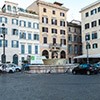
Piazza Farnese, one of the two fountains, on the left Palazzo del Gallo di Roccagiovine

One of the two twin fountains in Piazza Farnese

One of the fountains in Piazza Farnese

One of the two fountains in Piazza Farnese, behind the facade of the Church of Santa Brigida

One of the two fountains in Piazza Farnese, fragment, at the back, the facade of the convent belonging to the church of Santa Brigida Church

One of the two fountains in Piazza Farnese

One of the two fountains in Piazza Farnese, on the left the facade of Palazzo del Gallo di Roccagiovine

One of the two fountains in Piazza Farnese, fragment, on the left the facade of Palazzo del Gallo di Roccagiovine

One of the two fountains in Piazza Farnese, in front of Palazzo Farnese, on the right - the facade of the Church of Santa Brigida

Piazza Farnese, one of the two fountains, on the left the facade of the Church of Santa Brigida

Piazza Farnese

Piazza Farnese, one of the two fountains, on the left the facade of the Church of Santa Brigida
In front of the monumental palace of the Farnese family, there is a square (Piazza Farnese) with two identical fountains on the sides. From each, the water flows in a gentle manner. Yet in the past, which is testified to by old drawings, these were veritable cascades – the steams from the fountains soared upwards and with great impact fell into the upper basins, while the incoming excess water, as a thick curtain descended into the basins below.
In front of the monumental palace of the Farnese family, there is a square (Piazza Farnese) with two identical fountains on the sides. From each, the water flows in a gentle manner. Yet in the past, which is testified to by old drawings, these were veritable cascades – the steams from the fountains soared upwards and with great impact fell into the upper basins, while the incoming excess water, as a thick curtain descended into the basins below.
The thing that attracts our attention is above all the enormous ponds made out of Egyptian granite – the main elements of the fountains, which in ancient times were used for bathing and were most likely located in the Baths of Caracalla. They were first taken by Pope Paul II, who place them in front of his residence, the Palazzo Venezia. When Pope Paul III came into power, he decided to place one of the ponds on the newly paved square (1545), opposite the palace belonging to his family (Palazzo Farnese). This pond served purely a decorative function, it was not a fountain since there were no aqueducts, that would supply water to the square. The second pond, thanks to the Farneses, was transported here in 1580. Surrounded by a balustrade, here they both stood for subsequent decades.

In 1605, Pope Paul V ordered water to be supplied to the Regola district. Access was then provided, not only for the inhabitants of the palace but also for the fountains, for which the ancient ponds could be used. This task was entrusted to the architect Girolamo Rainaldi in 1626.
Each of the ponds, adorned with handles and medallions with the image of a lion, was placed in an oval, similar in shape to a shell, bulging on the longer sides, travertine basin. They were immersed in them, and decorated with festoons in the shape of pomegranate fruits. They support the upper basins, with identical from – in smaller dimensions – to the lower basins. The whole is finished off with a lily with open petals, from which the water emerges. The choice of a lily as a final motif in the fountain was not accidental. It is one of the heraldic elements of the Farnese family (six lilies).

At first glance, we will perhaps not notice any differences between the fountains. However, there is a difference – one of them is larger. The guess as to which, we may leave up to those visiting this place, whose charm and picturesqueness have the greatest impact at night or in the evening.


































